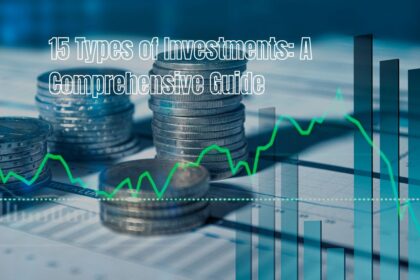Introduction
Best Low-risk investments are investments that have a low potential to lose money. They are often a good choice for investors who are risk-averse, have a short-term investment horizon, or are saving for retirement.
There are many different types of low-risk investments available, including high-yield savings accounts, certificates of deposit (CDs), money market funds, short-term government bonds, corporate bonds, dividend-paying stocks, real estate investment trusts (REITs), preferred stocks, annuities, life insurance, and gold.
Benefits of low-risk investments
There are several benefits to investing in best low-risk investments, including:
- Preserving capital: Low-risk investments can help you preserve your capital, meaning that you are less likely to lose money.
- Generating income: Some low-risk investments, such as dividend-paying stocks and REITs, can provide you with a steady stream of income.
- Diversifying your portfolio: Investing in a variety of low-risk investments can help you diversify your portfolio and reduce your overall risk.
- Reducing stress and anxiety: Investing in low-risk investments can help you reduce your stress and anxiety, as you know that your money is less likely to be at risk.
- Achieving your financial goals: Low-risk investments can help you achieve your financial goals, such as saving for retirement or buying a home.
Who should consider low-risk investments
Best low-risk investments are a good choice for a variety of investors, including:
- Risk-averse investors: Risk-averse investors are investors who are not comfortable with taking a lot of risk. Low-risk investments can help them preserve their capital and achieve their financial goals without taking on too much risk.
- Investors with a short-term investment horizon: Investors with a short-term investment horizon, such as investors who are saving for a down payment on a house, may not want to invest in high-risk investments. Low-risk investments can help them achieve their financial goals in a short period of time without taking on too much risk.
- Investors who are saving for retirement: Investors who are saving for retirement may want to consider investing in low-risk investments, as they know that they will need their money in the future. Low-risk investments can help them preserve their capital and grow their savings over time.
- Investors who are new to investing: Investors who are new to investing may want to start with low-risk investments. This can help them learn about the stock market and how to invest without taking on too much risk.
10 best low-risk investments in 2023
Here are the 10 best low-risk investments in 2023:
- High-yield savings accounts: High-yield savings accounts offer higher interest rates than traditional savings accounts. This can help you grow your money over time without taking on any risk.
- Certificates of deposit (CDs): CDs offer a fixed interest rate for a set period of time. This can be a good option for investors who are looking for a guaranteed return on their investment.
- Money market funds: Money market funds are a type of mutual fund that invests in short-term debt securities. They offer a high degree of liquidity and safety, making them a good option for investors who need to access their money quickly.
- Short-term government bonds: Short-term government bonds are a type of debt security that is issued by the government. They offer a low risk of default and a steady stream of income.
- Corporate bonds: Corporate bonds are a type of debt security that is issued by corporations. They offer a higher interest rate than government bonds, but they also come with a higher risk of default.
- Dividend-paying stocks: Dividend-paying stocks are stocks that pay dividends to their shareholders. This can be a good way to generate income from your investments.
- Real estate investment trusts (REITs): REITs are companies that own or operate income-producing real estate. They offer a good way to invest in real estate without having to buy and manage property yourself.
- Preferred stocks: Preferred stocks are a type of stock that pays a fixed dividend to shareholders. They offer a lower risk of price volatility than common stocks, making them a good option for investors who are looking for a steady stream of income.
- Annuities: Annuities are insurance contracts that provide you with a guaranteed stream of income in retirement. They can be a good option for investors who are looking for a secure source of income in retirement.
- Life insurance: Life insurance can provide financial protection for your loved ones in case of your death. It can also be used to save for retirement
How to choose the right best low-risk investments for you
When choosing low-risk investments, it is important to consider your risk tolerance, investment goals, and time horizon.
- Risk tolerance: Your risk tolerance is your willingness to take on risk. If you are risk-averse, you may want to choose investments with a lower potential return, but also a lower risk of loss. If you are more risk-tolerant, you may be willing to choose investments with a higher potential return, but also a higher risk of loss.
- Investment goals: Your investment goals are what you are hoping to achieve with your investments. Are you saving for retirement? Buying a home? Putting your children through college? Once you know your investment goals, you can choose investments that will help you achieve them.
- Time horizon: Your time horizon is how long you have until you need to access your money. If you have a short-term investment horizon, you may want to choose investments that are more liquid, meaning that you can easily sell them and get your money back. If you have a long-term investment horizon, you can choose investments that are less liquid, but have the potential to generate higher returns over time.
How to invest in best low-risk investments
There are a variety of ways to invest in low-risk investments. You can invest directly through a bank, broker, or financial advisor. You can also invest through mutual funds or ETFs.
- Investing directly: If you choose to invest directly, you will need to open an account with a bank, broker, or financial advisor. Once your account is open, you can start buying and selling investments.
- Investing through mutual funds or ETFs: Mutual funds and ETFs are baskets of securities that are managed by professional investment managers. They offer a convenient way to invest in a variety of low-risk investments.

Tips for success
Here are a few tips for success when investing in low-risk investments:
- Invest regularly: One of the best ways to grow your wealth over time is to invest regularly. This means setting aside a certain amount of money each month or year and investing it in low-risk investments.
- Diversify your portfolio: It is important to diversify your portfolio by investing in a variety of different low-risk investments. This will help to reduce your overall risk.
- Rebalance your portfolio regularly: As your financial situation changes, you will need to rebalance your portfolio. This means selling some of your investments and buying others to ensure that your portfolio still meets your risk tolerance, investment goals, and time horizon.
Conclusion
Best low-risk investments can be a good choice for investors who are risk-averse, have a short-term investment horizon, or are saving for retirement. There are a variety of different low-risk investments available, so it is important to choose the ones that are right for you. Consider your risk tolerance, investment goals, and time horizon when choosing low-risk investments. You can invest directly through a bank, broker, or financial advisor. You can also invest through mutual funds or ETFs.
Additional tips
- Do your research before investing in any low-risk investment. Read the prospectus or offering document carefully and understand the risks involved.
- Consider working with a financial advisor to help you choose the right low-risk investments for your needs.
- Remember that all investments carry some degree of risk. Even low-risk investments can lose value.
FAQs
Q: What are the best low-risk investments in 2023?
A: The best low-risk investments in 2023 are those that offer a good return on investment while minimizing risk. Some examples include:
• High-yield savings accounts
• Certificates of deposit (CDs)
• Money market funds
• Short-term government bonds
• Corporate bonds
• Dividend-paying stocks
• Real estate investment trusts (REITs)
• Preferred stocks
• Annuities
• Life insurance
• Gold
Q: What should I consider when choosing best low-risk investments?
A: When choosing low-risk investments, it is important to consider your risk tolerance, investment goals, and time horizon. You should also do your research and understand the risks involved before investing in any low-risk investment.
Q: What are the benefits of investing in best low-risk investments?
A: There are many benefits to investing in best low-risk investments, including:
• Preserving capital: Low-risk investments can help you preserve your capital, meaning that you are less likely to lose money.
• Generating income: Some low-risk investments, such as dividend-paying stocks and REITs, can provide you with a steady stream of income.
• Diversifying your portfolio: Investing in a variety of low-risk investments can help you diversify your portfolio and reduce your overall risk.
• Reducing stress and anxiety: Investing in low-risk investments can help you reduce your stress and anxiety, as you know that your money is less likely to be at risk.
• Achieving your financial goals: Low-risk investments can help you achieve your financial goals, such as saving for retirement or buying a home.
Q: How can I invest in best low-risk investments?
A: There are a variety of ways to invest in best low-risk investments. You can invest directly through a bank, broker, or financial advisor. You can also invest through mutual funds or ETFs.
Q: What are the risks of investing in best low-risk investments?
A: All investments carry some degree of risk, even low-risk investments. Some of the risks associated with best low-risk investments include:
• Inflation risk: Inflation can erode the purchasing power of your investment over time.
• Interest rate risk: If interest rates rise, the value of your investment may fall.
• Market risk: The stock market can be volatile, and even low-risk investments can lose value.
• Credit risk: There is a risk that the issuer of a bond or other debt security may default on its obligations.













